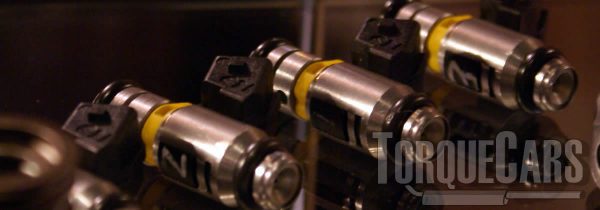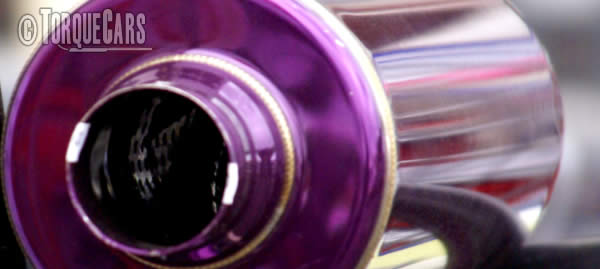Tuning the Rover 25
"Tuning guide to the best Rover 25 modifications."
The Rover 25 provide a fun base for your project and with the ultimate performance modifications like ECU maps, turbo improvements and camshafts you will really increase your driving experience.
The 25 is a brilliant car modification project to have. We see many people wasting money on their 25 doing the wrong mods and then having to start over. Follow our pointers to avoid ruining your car

Handling/Suspension upgrades
Many 25 owners uprate the handling of their cars with performance suspension modifications as a priority, this will certainly increase your enjoyment of the car.
Fully adjustable suspension allows you to fine tune the handling of you 25 radically improving your drive.
Drop the car by as much as 26mm - 39 mm. and fit sports stiffer dampers, bigger drops will need other modifications in most instances.
Top end power should be your overall aim with a nice fat wide peak torque band.
Smaller engines do not provide much of a return in terms of power so start with a bigger engine. Engine swaps are a good option if you have a small engine size.
Engine tuning mods.
The following kits are usually fitted by our members, decide how far you wish to go in your tuning project before you get going.
- 1.1 L K-Series I4 (petrol)
- 1.4 L K-Series I4 (petrol)
- 1.6 L K-Series I4 (petrol)
- 1.8 L K-Series I4 (petrol)
- 1.8 L K-Series VVC I4 (petrol)
- 2.0 L L-Series I4 (turbodiesel)
Engine swaps were popular, the 1.4 block was very similar to the 1.8VVC and there are lots of options for the 1.8 VVC including a turbo conversion.
The 2.0T Tomcat really made this a fast car but was not one of the easiest conversions to pull off.
Getting the best modified upgrades for your planned usage of the car is vital. Stage 3 competition upgrades just don't work well on the road and will make the car undrivable.
Please watch our introduction Video tutorial to car tuning. Be sure to subscribe and support our new channel.
How to tune your car
- Improve the handling
Focus on Suspension improvements, such as coilovers and make sure the bushings are in good order and that the alignment is correct. Then focus on improving the brakes, with a big disk brake conversion kit and fast road brake pads.
- Remove restrictions
Focus on the intake and exhaust with filters being the common point of restriction in a tuned car. Intercoolers may also become restrictive on turbo engines so this may also need to be uprated.
- Burn more fuel & air
Increase the fuelling so it matches the air coming into the engine. The ratio is important so you need to improve the fuel pump and injectors, so the head mods, big valve conversions, fast road camshafts and forced induction upgrades extra supply of air is adequately met.
- Test and replace any weak parts
Weak areas are commonly the clutch, the turbocharger and pistons and crankshaft in a highly tuned engine. Makes sure these components will cope with your power aspirations.
- The Tune or Remap
A cars ECU controls the fuel, timing, spark and even the turbo in some cases, so to fully extract your gains you should remap the car last and this will fully release the power. Some cars are easy to map, and others require piggyback ECU's or aftermarket ECU's but this is the most vital step of your tuning project.
Modifying to Stage 1:
Lighter flywheel, Panel air filter, Alloy wheels, Suspension upgrade (drop 26mm - 39 mm.), Sports exhaust, Remap*.
Modifying to Stage 2:
Fast road cam, fuel pump upgrades, Ported and polished head, high flow fuel injector, Power/Sport clutch.
Modifying to Stage 3:
Engine balancing, Sports gearbox, Adding or upgrading forced induction (turbo/supercharger), Competition cam, Internal engine upgrades (pistons/head/valves).
*(the Rover MEMS could not be remapped, but piggyback ECU's are around, ICON RACE was one we used)
Peak power is nice in motorsport but for a daily driven car you need a wide torque band and perhaps extending the rev range.
The whole point of our pointers is to give a brief overview of modding modifications and point you in the right direction, our forum is best place to go if you need more detailed advice and tips on your tuning project, the best performance kits and all aspects of modding cars.A fast road cam proves to be one of the best NASP power mods you can do mechanically to your engine.
It maximises the intake and exhaust durations and increases the power if done right. Ideally you'd add other mods and finish up with a reflashed ECU. We'd also caution you not to go with a motor sport cam as this upsets the engines idling and general town driving characteristics.
Don't forget to ramp up the fuelling when you are increasing the power - it makes the car more thirsty.
Most power losses, and erratic idling after modified upgrades are done can usually be traced to fuelling or timing issues.  To get sufficient fuel you may need to improve the injectors on your engine.
To get sufficient fuel you may need to improve the injectors on your engine.
A fuel pump will only deliver a finite amount of fuel, so you may need to uprate this if your injectors are demanding more fuel.
Intake and Exhaust Tuning.
Breathing mods are usually next up.  Induction kits will only help to add power if your air intake is restricted! Adding an induction kit to most stock engines will see NONE OF A LOW END POWER GAIN AT ALL.
Induction kits will only help to add power if your air intake is restricted! Adding an induction kit to most stock engines will see NONE OF A LOW END POWER GAIN AT ALL.
If you have heavily modified your engine and it's need for air INCREASES DRAMATICALLY then an induction kit is the answer and will help remove this restriction.

For most 25 engines TorqueCars would suggest you just go with a washable panel air filter. On heavily tuned engines and turbo vehicles an induction kit will help release the power providing you address the problem of needing cold air.
Do not go with the widest exhaust you can find this will slow the exhaust rate - the best exhausts for power gains are usually between 1.5 to 2.5 inches. It is the shape and material more than the bore size.
Getting a professionally flowed (ported and polished) head with larger valves can fully release the engines power. In nearly all cases of 25 tuning your clutch will start to fail and this should be improved - read our tips on clutches for more information.
The best mods we would do for your 25 are remaps, sports camshafts and induction improvements.
Remaps offer large power gains on all turbo charged cars. On NASP engines the benefits are doubtful.
However a flashed ecu on a NASP engine will help unleash the potential if you have done a lot of mods.
The most phenomenal power gains for NASP engines usually involve the addition of forced induction. It is generally easier to bolt on a supercharger than it is to bolt on a turbo. Turbos provide boost in increasing proportion to th engine speed and this can make mapping difficult.
The nice directly proportional boost and rpm characteristics of the supercharger make them more straightforward to map. Adding forced induction will often require a lower compression ratio or water injection.
Alloy wheel upgrades.
Due to the fact that alloy wheels are less heavy they improve performance and they help to cool the brake disks.
We can't go into too much detail here about tires but they are how the car puts the power down on the road so are a critical choice. soft compound tires work well on 25, and make a big difference over budget tires.
The downside to large rims on your 25 is that you alter your final drive ratio so this will have a negative effect on acceleration.
Although some people have fitted larger wheels without issues we would stick to a 17 inch rim size as the maximum.
For more information on Tuning your car please join us in our friendly forum where you can discuss 25 options in more detail with our 25 owners. It would also be worth reading our unbiased Rover tuning articles to get a full grasp of the benefits and drawbacks of each modification.
Please help us improve these tips by sending us your feedback in the comments box below.
We love to hear what our visitors have got up to and which mods work best for them on each model of car. Comments are used to improve the accuracy of these articles which are continually updated.
If you liked this page please share it with your friends, drop a link to it in your favourite forum or use the bookmarking options to save it to your social media profile.
Check out TorqueCars new YouTube channel, and see their awesome new content...
Feedback
Please use our forums if you wish to ask a tuning question, and please note we do not sell parts or services, we are just an online magazine.
Help us improve, leave a suggestion or tip
